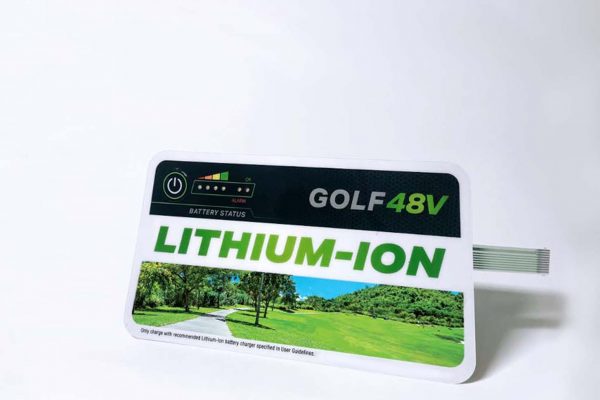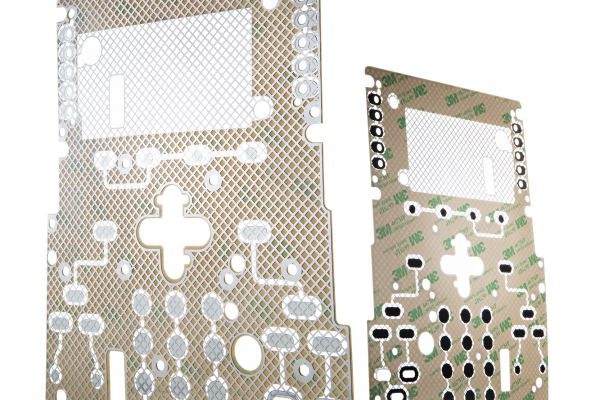Biosensors: The Future of Precision Detection

What Are Biosensors?
Biosensors are analytical devices designed to convert a biological response into an electrical signal, facilitating the precise detection of various substances. Operating on the core principle of biorecognition, a biological element interacts with an analyte, triggering a measurable response. This technology is crucial in areas such as healthcare, environmental monitoring, and food safety, offering rapid and accurate results.
There are several types of biosensors, including implantable, wearable, and environmental biosensors. Implantable biosensors are intended for long-term use within the body, providing continuous monitoring of physiological parameters. Wearable biosensors, often found in fitness trackers and smartwatches, enable users to track health metrics like heart rate and glucose levels in real-time. Environmental biosensors play a vital role in detecting pollutants and pathogens in air, water, and soil, contributing to ecological balance. Biosensors example: wearable biosensors found in smartwatches.
Key components of a biosensor include a biological sensing element, a transducer, and a signal processor. The biological element, which can be enzymes, antibodies, or cells, interacts with the target analyte. The transducer converts this interaction into an electrical signal, which is then processed and displayed by the signal processor. This fusion of biology and technology not only enhances detection accuracy but also opens up new avenues for innovations in precision detection and monitoring. Nanotechnology in biosensors is playing a pivotal role in these advancements.
Applications of Biosensors in Precision Detection
Biosensors are transforming precision detection, particularly in healthcare diagnostics. These devices provide rapid and accurate results, enabling healthcare professionals to make informed decisions swiftly. By detecting specific biomarkers, biosensors can identify diseases at their earliest stages, facilitating timely interventions and improving patient outcomes.
Beyond diagnostics, biosensors are critical in drug monitoring and chronic disease management. They enable real-time tracking of drug levels in patients, ensuring therapeutic doses are maintained while minimizing side effects. This is particularly important for individuals with chronic conditions, where medication adherence is vital for effective management and quality of life.
Biosensors are also increasingly used in environmental monitoring and food safety. They offer a reliable method for detecting contaminants and pathogens in various environments, safeguarding public health and safety. For instance, biosensors can identify harmful substances in water sources or trace allergens in food products, providing consumers with confidence that they are consuming safe and healthy products. Biosensors example: detecting contaminants in water sources.
As the demand for precision detection grows, the versatility and efficacy of biosensors position them as indispensable tools across various sectors, from healthcare to environmental protection.
Advancements in Biosensor Technology
The field of biosensor technology is experiencing rapid advancements, driven by innovations in materials and designs that enhance performance and reliability. Recent breakthroughs have introduced new biocompatible materials, such as nanomaterials and conductive polymers, which improve the sensitivity and specificity of biosensors. These innovations enable the detection of biomolecules at lower concentrations, making biosensors more effective in medical diagnostics and environmental monitoring. Nanotechnology in biosensors continues to push the boundaries of what is possible.
Additionally, the integration of the Internet of Things (IoT) and artificial intelligence (AI) is revolutionizing biosensor functionality. IoT-enabled biosensors can collect and transmit data in real-time, facilitating continuous monitoring of health parameters or environmental conditions. AI algorithms can analyze this data, providing insights that enhance decision-making processes and predictive capabilities. This synergy between biosensors, IoT, and AI not only optimizes performance but also paves the way for personalized healthcare solutions.
Another significant trend is the miniaturization and portability of biosensors. Advances in microfabrication technologies have led to the development of compact, lightweight devices that can be easily integrated into wearable technology or handheld diagnostics. This portability allows for on-the-go testing, making biosensors more accessible for everyday use. As these technologies continue to evolve, the future of biosensors promises to be more efficient and user-friendly, significantly impacting various sectors including healthcare, environmental science, and food safety.
Challenges and Limitations of Current Biosensor Technologies
Biosensors represent a significant advancement in precision detection, yet several challenges and limitations hinder their broader adoption and effectiveness. One of the foremost technical challenges is achieving consistent accuracy and reliability. Variations in environmental conditions, sample composition, and sensor design can lead to fluctuating results, which may compromise the trustworthiness of biosensor data. Researchers and developers must continually innovate to enhance sensor stability and ensure that readings are both precise and reproducible.
In addition to technical hurdles, regulatory challenges also pose significant barriers to biosensor development and deployment. The pathway to regulatory approval can be lengthy and complex, often requiring extensive testing and validation to meet safety and efficacy standards. This not only delays the introduction of new biosensors into the market but can also increase costs for manufacturers, which may subsequently impact pricing for consumers.
Cost and accessibility are further critical issues that affect the widespread adoption of biosensors. While the technology holds great promise, high production costs can limit availability in low-resource settings. Ensuring that biosensors are affordable and accessible to a wider audience is essential for maximizing their potential impact on healthcare and environmental monitoring. Addressing these challenges is crucial for the evolution of biosensors as a reliable tool in precision detection.
The Future of Biosensors in Precision Medicine
The field of biosensors is poised for significant advancements, with predicted trends indicating a shift towards more integrated and miniaturized technologies. As research continues to evolve, we can expect biosensors to become even more sensitive and specific, enabling real-time monitoring of biomarkers in various medical conditions. These developments are crucial for enhancing the accuracy of diagnostics and treatment plans, ultimately transforming the landscape of precision medicine. Biosensors: the future of precision detection is becoming clearer every day.
The impact of these innovations on personalized medicine is profound. With the ability to detect minute changes in a patient’s biological markers, healthcare providers can tailor interventions more effectively, leading to improved patient outcomes. For instance, biosensors can facilitate the monitoring of chronic diseases, allowing for timely adjustments in treatment regimens based on real-time data. This level of precision not only enhances the efficacy of care but also fosters a more proactive approach to health management.
Moreover, emerging markets present vast opportunities for biosensor applications, especially in regions where access to healthcare is limited. As affordability and availability of biosensor technologies increase, we anticipate a surge in their use in remote monitoring and telemedicine. This expansion will not only enhance access to quality healthcare but will also empower patients to take control of their health through continuous monitoring and feedback. As biosensor technology continues to advance, it will undeniably play a pivotal role in shaping the future of precision medicine.
Conclusion: The Transformative Potential of Biosensors
Biosensors are revolutionizing the field of precision detection, offering unparalleled benefits that extend across numerous industries. Their ability to provide real-time, accurate results enhances diagnostic capabilities, reduces response times, and ultimately improves patient outcomes. By integrating biological components with electronic systems, biosensors facilitate the detection of specific substances, making them invaluable in healthcare, environmental monitoring, and food safety. The precision they offer ensures that critical decisions are based on reliable data, paving the way for innovative solutions and improved quality of life. Biosensors: the future of precision detection is not just a vision but a reality taking shape.
However, the journey does not end here. To fully harness the potential of biosensors, ongoing research and development are crucial. Investment in this area will drive advancements in technology, enabling even more sophisticated applications that can adapt to the evolving needs of society. As we continue to explore the capabilities of biosensors, we invite researchers, developers, and industry professionals to collaborate and innovate, ensuring that we remain at the forefront of this transformative technology.
Looking ahead, the integration of biosensors into daily life presents a vision where health monitoring becomes seamless and proactive. Imagine a world where wearable biosensors continuously track vital health metrics, alerting individuals to potential health issues before they become critical. In agricultural settings, biosensors could monitor soil conditions in real-time, optimizing crop yields while minimizing environmental impact. The possibilities are vast, and as we embrace this future, we can expect biosensors to play a pivotal role in shaping a healthier, more efficient world.
More from Ken
When people hear the term graphic overlay, they often think of it as just a decorative cover. But in industrial and medical applications, polycarbonate overlays and other engineered materials are much more than a cosmetic detail. They are a critical…
Projected Capacitive (PCAP) touch technology has revolutionized modern touchscreens, providing highly responsive, durable, and intuitive user experiences. From smartphones to industrial control panels, PCAP touchscreens are now the gold standard for applications requiring precision and reliability. At JN White, we…
In an age where electronic devices are at the core of nearly every industry, protecting sensitive equipment from electromagnetic interference (EMI) and radio frequency interference (RFI) is crucial. One of the most effective solutions for shielding electronics from these disruptive…








